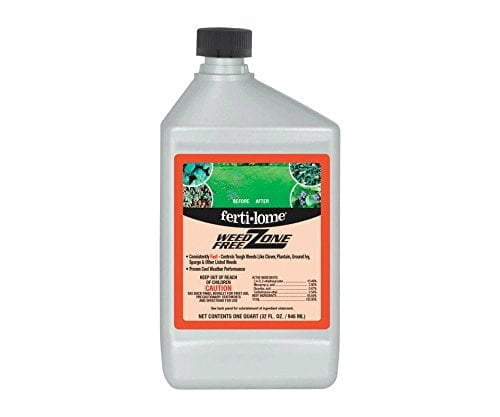Tired of dealing with sticky sap oozing out of your deck boards? It’s not only annoying, but it can also be a safety hazard, causing slips and falls. But don’t worry, there are several steps you can take to put an end to this sticky situation.
In this article, we will guide you through the process of stopping sap from coming out of your deck boards. By understanding the source of the sap and implementing regular cleaning and sealing routines, you can prevent sap from seeping through.
We will also explore the use of deck brighteners, sealers, and commercial sap removers to tackle stubborn sap spots. Additionally, we’ll provide tips on using alcohol or oil-based cleaners, as well as heat or solvents, to remove persistent sap.
With these techniques, you’ll be able to enjoy a sap-free, safe deck all year round.
Quick Summary
- Choose deck boards made from tree species with lower sap content to reduce sap leakage.
- Apply a sealant or protective coating to prevent sap from seeping out of the deck boards.
- Regularly clean and seal the deck to prevent sap leaks.
- Trim overhanging branches or trees near the deck to minimize sap-producing plants.
Understand the Source of the Sap
If you’re wondering how to stop sap from coming out of deck boards, it’s important to understand the source of the sap. Identifying the tree species is crucial in tackling this issue.
Different trees have varying sap production processes, so knowing what kind of tree your deck boards are made from can help you find the most effective solution.
First, let’s talk about the sap production process. Trees produce sap as a way to transport nutrients and water from the roots to the leaves. It is a natural process that is essential for the tree’s survival. However, when deck boards are made from certain tree species that have a high sap content, it can lead to sap oozing out of the boards.
To prevent sap from coming out of your deck boards, you can take a few precautions. One option is to choose deck boards made from tree species with lower sap content. This can significantly reduce the chances of sap leakage. Additionally, applying a sealant or protective coating to the deck boards can create a barrier that prevents sap from seeping out.
Understanding the source of the sap and taking appropriate measures can help you maintain a sap-free deck and ensure a safer outdoor space for you and your family.
Clean and Seal Your Deck Regularly
Regularly cleaning and sealing your deck will help maintain its beauty and protect it from potential issues. Deck maintenance is essential for preventing sap leaks and ensuring the safety of your outdoor space. By following a regular cleaning and sealing routine, you can prevent sap from coming out of your deck boards.
One way to effectively clean your deck is by using a deck cleaner solution. This will help remove dirt, grime, and any sap residue that may be present. Use a stiff brush or a power washer to scrub the deck surface thoroughly. Pay extra attention to areas where sap leaks are more likely to occur, such as near trees or shrubs.
After cleaning, it is crucial to seal your deck to provide an extra layer of protection. Choose a high-quality deck sealant that is specifically designed to prevent sap leaks. Apply the sealant evenly across the entire deck surface, including the deck boards and the gaps between them. This will help seal the wood and minimize sap leakage.
To help you understand the importance of regular deck maintenance and the steps involved in preventing sap leaks, let’s take a look at the following table:
| Step | Description |
|---|---|
| 1 | Clean the deck surface using a deck cleaner solution and a stiff brush or power washer. |
| 2 | Pay extra attention to areas prone to sap leaks, such as near trees or shrubs. |
| 3 | Apply a high-quality deck sealant evenly across the entire deck surface, including the gaps between the boards. |
| 4 | Repeat the cleaning and sealing process regularly, at least once a year, to maintain the deck’s integrity. |
By incorporating these deck maintenance practices into your routine, you can prevent sap leaks and ensure a safe and beautiful outdoor space.
Use a Deck Brightener or Stain Stripper
To enhance the appearance and longevity of your deck, try using a deck brightener or stain stripper to revitalize its surface. Deck maintenance is important to keep your deck looking its best and to prevent any potential hazards.
One common issue that many homeowners face is the problem of tree sap coming out of deck boards. This sticky substance can not only make your deck look unsightly, but it can also be a safety concern if it causes the deck to become slippery.
To remove tree sap from your deck, start by applying a deck brightener or stain stripper according to the manufacturer’s instructions. These products are designed to break down and remove tough stains, including tree sap. Make sure to wear protective gloves and eyewear to ensure your safety during the process. Use a stiff brush or broom to scrub the affected areas gently. Rinse the deck thoroughly with water to remove any residue.
After removing the tree sap, it’s important to clean and seal your deck regularly to prevent future issues. Regularly applying a deck sealer or stain will help protect your deck from the elements and keep it looking fresh and new. Remember, proper deck maintenance is key to enjoying your deck for years to come.
Apply a Deck Sealer or Water Repellent
For optimal protection and longevity, make sure you apply a deck sealer or water repellent to keep your deck looking its best. Not only will this help prevent sap from coming out of your deck boards, but it’ll also provide numerous benefits for your deck. Here are three reasons why applying a deck sealer is beneficial:
-
Enhanced Waterproofing: A quality deck sealer creates a protective barrier on your deck’s surface, preventing water from penetrating the wood. This helps minimize the risk of rot, mold, and mildew, which can compromise the structural integrity of your deck.
-
UV Protection: Exposure to the sun’s harmful UV rays can cause your deck’s color to fade over time. A deck sealer with UV protection helps shield your deck from these damaging rays, preserving its color and appearance for longer.
-
Increased Durability: By sealing your deck, you make it more resistant to wear and tear caused by foot traffic, furniture, and other elements. This can extend the lifespan of your deck, saving you money in the long run.
When applying a water repellent or deck sealer, keep these tips in mind:
- Clean and dry your deck thoroughly before applying the sealer.
- Follow the manufacturer’s instructions for application, including the recommended number of coats.
- Apply the sealer evenly using a brush, roller, or sprayer, and allow sufficient drying time between coats.
By taking these steps and using a reliable deck sealer or water repellent, you can effectively prevent sap from coming out of your deck boards while ensuring the safety and longevity of your deck.
Try a Commercial Sap Remover
If you’re looking for a quick and effective solution, why not give a commercial sap remover a try? These products are specifically designed to safely and efficiently remove sap from deck boards, without causing any damage. They are readily available at most home improvement stores and can save you time and effort compared to natural remedies or DIY sap removal methods.
Commercial sap removers work by breaking down the sap and making it easier to remove. They often come in a gel or liquid form, which can be applied directly to the affected areas. To use a commercial sap remover, simply follow the instructions provided on the packaging. In most cases, you will need to let the product sit on the sap for a few minutes before gently scrubbing it away with a brush or sponge.
To help you make an informed decision, here is a comparison table of some popular commercial sap removers:
| Product Name | Features | Safety Precautions |
|---|---|---|
| Brand A | Non-toxic formula | Wear gloves |
| Brand B | Fast-acting | Use in a well-ventilated area |
| Brand C | Environmentally friendly | Avoid contact with eyes |
Remember to always prioritize safety when using any chemical product. Follow the manufacturer’s instructions and take necessary precautions to protect yourself and the environment. With a commercial sap remover, you can easily and safely remove sap from your deck boards, restoring their beauty and preventing any further damage.
Use an Alcohol or Oil-Based Cleaner
When it comes to removing sap from your deck boards, using an alcohol or oil-based cleaner can be a game-changer. Not only are these cleaners effective at breaking down the sap, but they’re also safe to use on your deck.
One option is to use an alcohol-based cleaner. Simply pour a small amount onto a clean cloth and gently rub it over the sap. The alcohol will help dissolve the sap, making it easier to wipe away.
Another option is to use an oil-based cleaner. Apply a few drops of the cleaner directly onto the sap and let it sit for a few minutes. Then, using a clean cloth, gently rub the sap until it starts to break down.
If the sap is particularly stubborn, you can also try using a pressure washer. This powerful tool can help blast away the sap from your deck boards. Simply adjust the pressure settings to a level that won’t damage the wood and aim the nozzle at the sap. Be sure to keep a safe distance to prevent any accidents.
Alternatively, you can create a vinegar solution by mixing equal parts water and vinegar. Apply the solution to the sap and let it sit for a few minutes. Then, using a scrub brush or sponge, gently scrub the sap until it starts to lift off. Rinse the area with water to remove any residue. Remember to always wear gloves and eye protection when handling any cleaning solutions.
Use Heat or Solvents for Stubborn Sap
To effectively tackle stubborn sap on your deck, you can use heat or solvents, which will help dissolve and remove the sticky residue. Here are three methods you can try:
-
Heat gun or blow dryer: Apply heat directly to the sap to soften it, making it easier to remove. Use a heat gun or blow dryer on a low setting and hold it a few inches away from the sap. Move the heat source back and forth over the sap until it becomes soft and pliable. Then, gently scrape it off with a plastic scraper or credit card.
-
Rubbing alcohol: If you prefer a solvent-based approach, use rubbing alcohol to remove the sap. Moisten a cloth with rubbing alcohol and dab it onto the sap. Let it sit for a few minutes to allow the alcohol to dissolve the sap. Then, gently rub away the residue. Be sure to wear gloves and work in a well-ventilated area when using alcohol.
-
Vegetable oil or mayonnaise: For a natural alternative, use vegetable oil or mayonnaise to break down the sap. Apply a small amount to a cloth and rub it onto the sap. Let it sit for a few minutes to allow the oil to penetrate the sap. Then, use a cloth or sponge to wipe away the residue. Rinse the area with warm soapy water afterwards to remove any oily residue.
Remember to always test any solvents or heat sources on a small, inconspicuous area of your deck before applying them to a larger area. Safety should always be a top priority when dealing with sap removal.
Prevent Future Sap Issues
If you’ve successfully removed stubborn sap from your deck boards using heat or solvents, congratulations! Now, let’s focus on preventing future sap issues.
Taking preventive measures is key to ensuring a sap-free deck. One natural remedy to consider is applying a protective sealant to your deck. This will create a barrier between the wood and the sap, making it easier to clean and preventing sap from seeping into the boards. Look for sealants specifically designed for outdoor use and follow the manufacturer’s instructions for proper application.
Regularly cleaning your deck is another important preventive measure. Removing any debris, such as leaves or twigs, will help prevent sap from accumulating on the surface. Use a broom or a leaf blower to sweep away any potential sap sources.
Additionally, consider trimming any overhanging branches or trees near your deck. This will minimize the amount of sap-producing plants that could potentially drip sap onto your deck boards.
By taking these preventive measures and using natural remedies, you can enjoy a sap-free deck and maintain a safe and clean outdoor space for you and your family.
Frequently Asked Questions
How can I prevent sap from coming out of my deck boards in the future?
To prevent sap from coming out of your deck boards in the future, try using natural remedies like rubbing alcohol or vinegar to remove sap stains. Also, protect your deck furniture and accessories with waterproof covers to avoid sap stains.
What are some commercial sap removers that I can try?
For alternative sap removal methods, consider using a commercial sap remover like Goo Gone or Pine-Sol. These products are designed to safely remove sap from surfaces without causing damage. Additionally, DIY sap removal solutions include using rubbing alcohol or vinegar.
Can I use alcohol or oil-based cleaners to remove sap from my deck boards?
To safely remove sap from your deck boards, avoid using alcohol or oil-based cleaners as they may damage the wood. Instead, try natural alternatives like vinegar or lemon juice mixed with water to gently clean the sap without harming your deck.
Are there any heat or solvent-based methods that can be used to remove stubborn sap?
To remove stubborn sap from deck boards, you can use heat-based methods like using a heat gun or blow dryer to soften the sap, making it easier to scrape off. Additionally, natural sap repellents can help prevent sap from reoccurring.
How often should I clean and seal my deck to prevent sap issues?
To maintain deck longevity and protect it from harsh weather conditions, it is recommended to clean and seal your deck at least once a year. This will help prevent sap issues and ensure the safety of your deck.
Conclusion
In conclusion, by following these steps, you can effectively stop sap from coming out of your deck boards.
Understand where the sap is coming from and clean and seal your deck regularly to prevent sap buildup.
If you still have sap issues, try using a deck brightener or stain stripper, or consider using a commercial sap remover. Additionally, using an alcohol or oil-based cleaner can help remove stubborn sap.
Lastly, take preventive measures to avoid future sap problems. Keep your deck well-maintained and enjoy a sap-free outdoor space.







